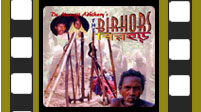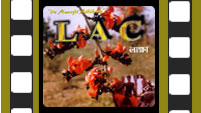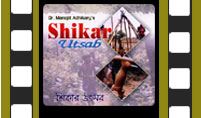| As
a Director - His Documentaries |
|
| THE
MASK LORE OF MANBHUM |
|
'Chho'
mask dance is a very popular performance of the 'Manbhum School
of Chho' as practised on the eve of 'Gajan'. The performance
ritually starts from 'Chaitra Sankantri' till 'Rohini of Jaistha'.
The mythical, historical and social plays on many valorous
characters are enacted by the performers with the vigourus
'Chho' masks. The Chho-mask-making has become a cottage industry
and is appreciated by the folk-art lovers from all corners
of the country and abroad. Paper pulp as its main ingredient
is coloured and decorated by other items are also used to
make it appealing.
Duration 22 minutes 15 seconds (English & Bengali
Version) |
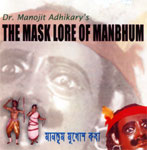 |
| BISHAN
SHILPA |
|
The
Horns of cattle, specially buffalo horns, have given birth
to a new dimension to cottage industry by producing many useful
and decorative items. The prime item is hair-comb of various
designs and sizes. Indian 'Horn-Art' has its demand abroad.
This industry needs to be more equipped to meet its demand.
Duration 15 minutes 55 seconds (English & Bengali
Version) |
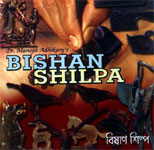 |
| LAC |
|
Lac
is a natural resin secreted by tiny 'lac-insects' to protect
itself along with itself with its larvae at the time of its
breeding. Lac is cultivated at the twigs of some particular
trees mostly grown in the forest area. Indian lac dominates
in international market for its highest production and excellent
quality. Lac is used in paints and varnishes, pharmaceuticals,
automobiles, electricals, agriculture, defence and many other
important industries. Kolkata is the main marketing centre
of lac.
Duration 21 minutes 5 seconds (English & Bengali
Version) |
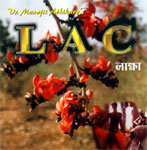 |
| THE
BIRHORS |
|
The
Birhors are considered as one of the primitive tribal groups
in India, mostly found in the hilly contiguous region of West
Bengal, Jharkhand and Orissa.
'Bir' means 'jungle' and 'Hor' means 'man' in their own language.
They depend on forest produces, thus surviving on hunting
and gathering. No authentic record is found about population
due to their nomadic nature. Rope making with some specific
creepers and barks of trees is their traditional occupation.
Deforestation has now become a threat to the survival of this
ethnocentric community.
Duration 24 minutes
|
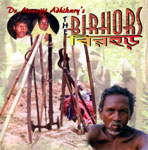 |
| RENUNCIATION
- A FOLKWAY |
|
Gajan
is a folk festival of Bengal observed though its length and
breadth. Having its origin in the Vedic age, it has got its
deep-rooted tradition through the pages of history.
The festival usually lasts for a month where a group of people
devote themselves to the whole society. The entire season
comprises several religious performances, rituals and cultural
manifestations which mainly express the desire of people to
renunciate. The entire society gets involved to inspire and
stand by the devotees. It faces a treamendous challenge today
with its old fashioned expressions.
Duration 28 minutes 26 seconds
|
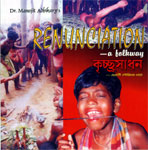 |
| SHIKAR
UTSAB |
|
The
'Desh Shikar" is observed on the Baisakhi full moon day
specially at Ayodhya Hill of Purulia (in West Bengal) by the
indigenous malefolks. After their hunting-activities, 'Dhunger'
dance and 'Uday-jhumur" with 'Sing-Rai' dance drama are
performed with erotic songs and music through which a boy
gets his proper sex education with all its taboos that befit
his own society.
Duration 18 minutes (English & Bengali Version) |
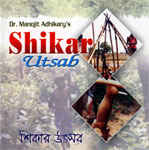 |
| THE
YOUTH FESTIVALS OF JHARKHAND |
|
"The
man is yet to be born who has not participated in the 'Desh
Shikar (Annual hunting festival) and the woman is not considered
to be bloomed if she has not participated in the 'Chhata Parab
of Chakoltor'."- A proverb of the indigenous communities
of West Bengal, Jharkhand and Orissa. These two festivals
have merged to come under one title to emphasise the vigour
of the tribal youths. The generation gap is wiped out and
the boy feels for the first time the fragrance of youth.
Duration 19 minutes 38 seconds (English & Bengali
Version) |
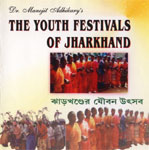 |
| CHHATA
PARAB |
|
The
'Chhata Parab' is celebrated specially by the indigenous womenfolk
on the day of Bhadra Sankranti, by worshipping their 'God
of rain'. The festival signifies the vigour of fertility.
In the fair ground of Chakoltore, Chhata hoisted on the Sal
tree pole symbolises the protection of the peasants and their
crops in the territory. The festival has been observed for
the last 500 years.
Duration 16 minutes 48 seconds (English & Bengali
Version) |
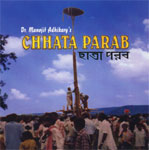 |
| THE
SHABARS |
|
The
Shabars are the hunting and gathering tribal community who
are sometimes known as 'Kharias' or 'Lodhas' in West Bengal,
Orissa & Jharkhand. As their main source of living is
forest, deforestation has compelled many of them to run into
daily labourers. Their traditional culture has also bee threatened
by the imposition of other greater religious traditions. This
primitive, nature-worshipper community survives in utmost
poverty. |
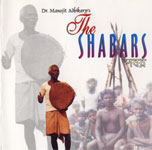 |
| BANDNA |
|
The
correlation of the cattle and the act of farming needs no
explanation. BANDNA is a festival of the vast plains in the
western part of West Bengal which reflects a total environment
of feeling for the cattle. It is that good side of human sensibility
which considers cattle as an integral part of human civilization
and culture.
The documentary envisages to find out the reality as it were
and as it is. The question as to how long this may survive
has also been raised.
Duration: 37 Minutes
|
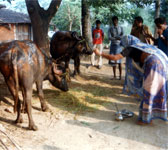 |
| NON-TIMBER
FOREST PRODUCTS (NTFP)-BASED LIVELIHOOD GENERATION |
|
In
the dry deciduous forests of central India, NTFPs are the
major source of livelihood and income generation to local
people. In the study area, due to the extremely dry climate
and the erratic nature of rainfall, only about 20% of people
undertake rainfed agriculture with the result that forest
are under tremendous pressure from cattle grazing and fire,
Unsustainable harvesting and collection of NTFPs has reduced
their availability in the natural forest, which is threatening
the livelihood of the tribal collectors. Community awareness
generation, science and technology application for NTFP processing
and value addition and capacity building were the key approaches
for rural livelihood and income generation. The film emphasises
the activities required for sustainable Non-Timber Forest
Products (NTFP) management.
Duration: 25 Minutes |
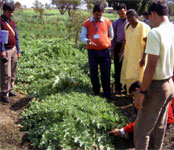 |
| Bhumikanya (Daughter of the Soil) (29 min. 24 sec.) |
|
Synopsis of the Film :
The harvesting festival of the South-West region of West Bengal, also covering some parts of Jharkhand and Bihar is popularly known as Tusu. Tusu is a folk belief, never any God or Goddess, but much more a sweet little girl of the tribal folk. The festival takes place when new crops are harvested. The entire festival is a very colourful one. It takes the shape of the all-around festive mood of the tribal people, where everyone takes part.
This documentary depicts the history, the colours and the overwhelming influence of this festival in the vast region of South-West West Bengal and Parts of Jharkhand and Bihar. |
|
| |
|
Go-Bandana (The Cattle Worship Festival) (25 min. 13 sec.) |
|
Synopsis of the Film
The co-relation of the cattle and the act of farming needs no explanation. BANDNA is a festival of the vast plains in the western part of West Bengal which reflects a total environment of feeling for the cattle. It is that good side of human sensibility which considers cattle as an integral part of human civilization and culture.
The documentary envisages to find out the reality as it were and it is. The question as how long this will survive has also been raised.
|
|
| |
|
| Jhanpan (Festival of the Serpent Goddess) (22 min. 36 sec.) |
|
Synopsis of the Film :
Jhanpan, the folk festival is held all over West Bengal, but it is predominant in South Bengal which is full of jungles, rivers and canals - the happy hunting ground of the snakes.And Jhanpan is the festival where the goddess Manasa is worshipped to get rid of the snake-bite. The Bengali rainy season, which spans the months like Ashar, Shravana, Bhadar and Ashwin, is fixed for this festival. Clay image of Manasa is built up and worshipped in Jhanpan. The remarkable feature of this festival is to play with snakes. The main purpose of the puja is to get rid of the snake-bite and to have happy and prosperous life. At the time of the sacrifice of the animals to the goddess, devotees pray with great devotion and frenzy by wallowing on the on the resultant blood. Women play the stellar role in the worshipping of Manasa. |
|
| |
|
| |
Go
to top ... |

